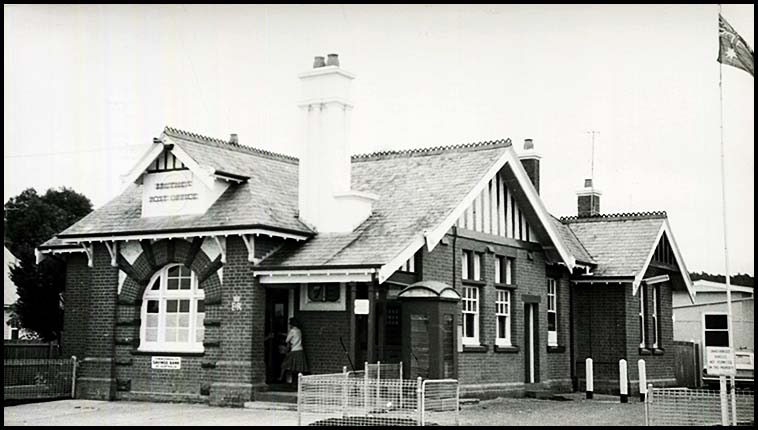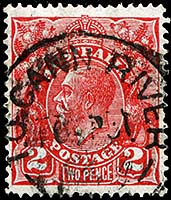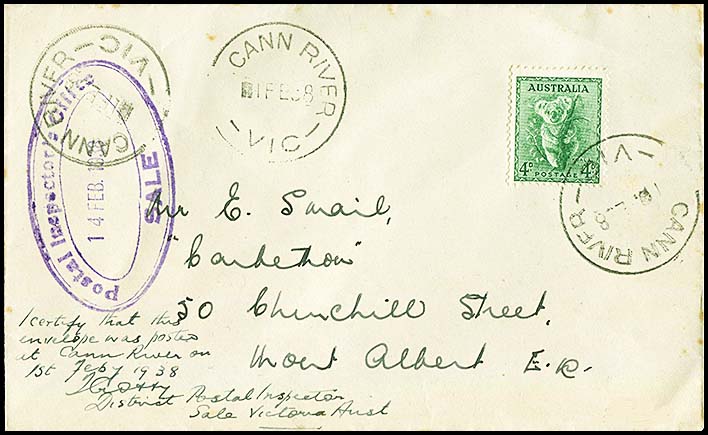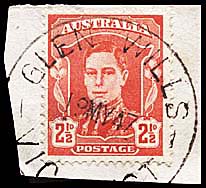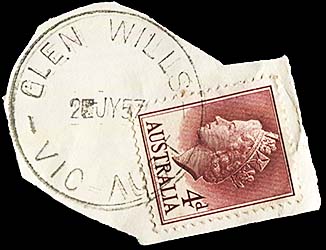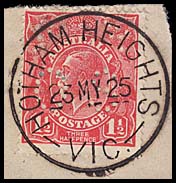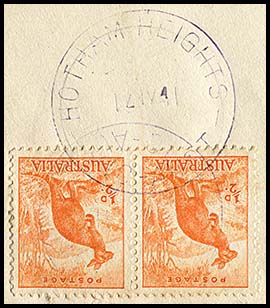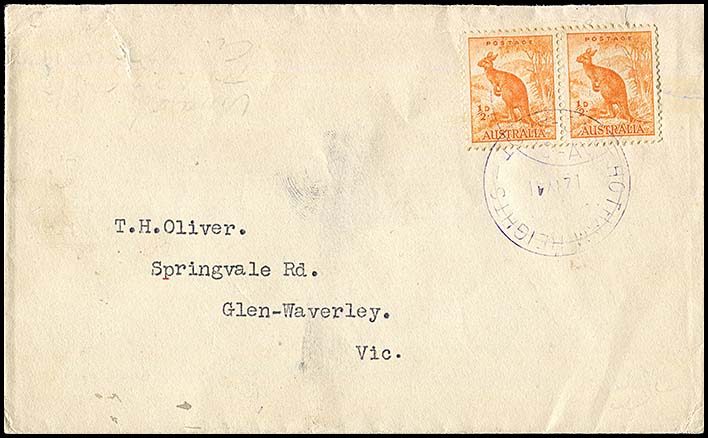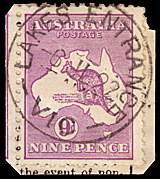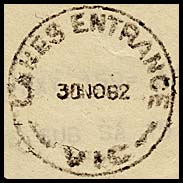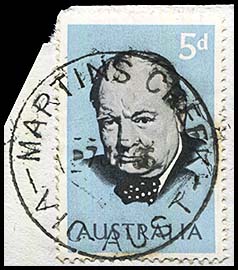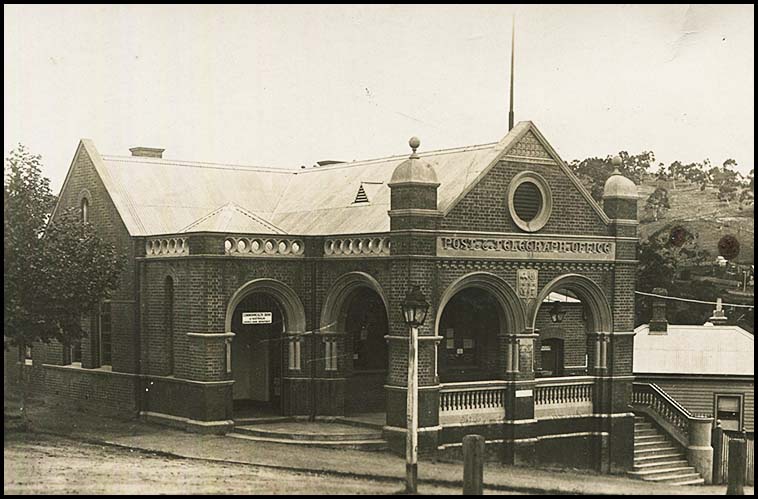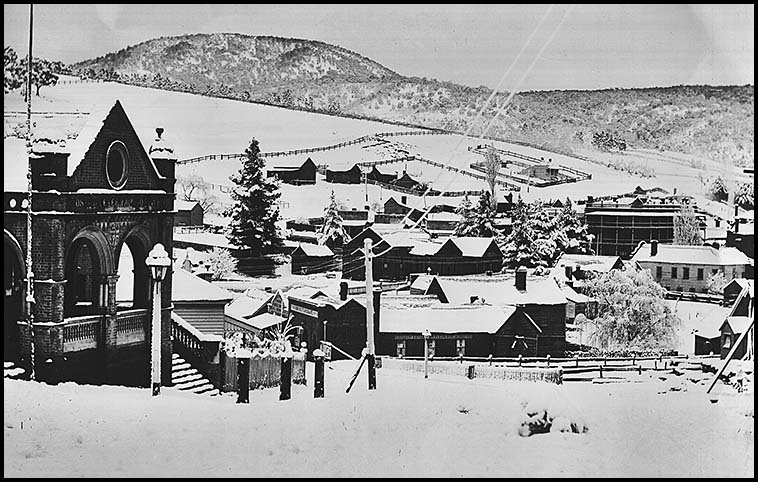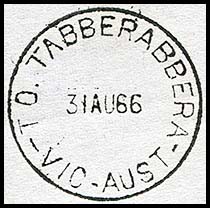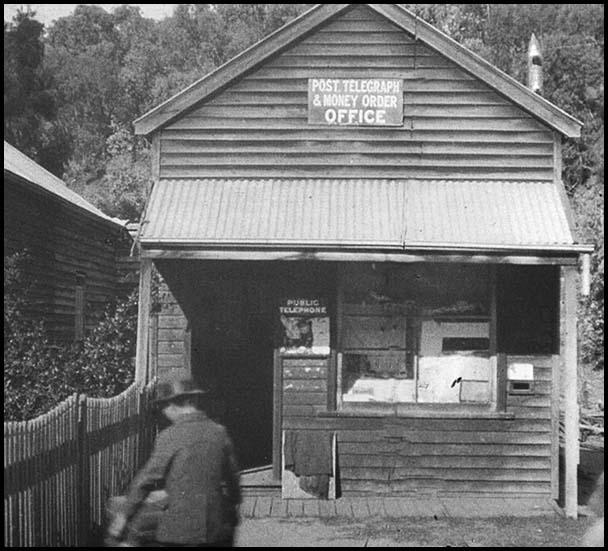Telegraph Offices on the Bairnsdale Branch and beyond.
- Australia 1901-1988
- New South Wales
- Queensland
- South Australia
- Tasmania
- Victoria
- Western Australia
- International
- Special aspects
The following Telegraph Offices are included on this page:
|
The Gippsland Times reported on 6 February 1884:
|
| In April 1888, the Postmaster General agreed that the Bairnsdale Post and Telegraph Office could remain in its present position and contemplated additions could now proceed. Nevertheless, by 1890, discussions and public meetings were well underway in relation to the building of a new Post and Telegraph building in a central position in Main Street. The Post Office was (sadly) demolished in 1970. |
| The office was issued with three types of date stamp for use with telegraphs: |
|
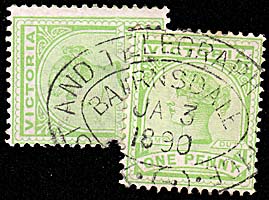 3 January 1890. |
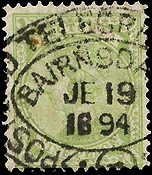 19 June 1894 (latest recorded date). |
Used in blue on 20 October 1891 and in 1892. |
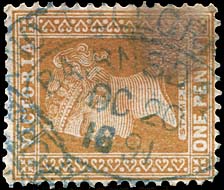 20 October 1891 (earliest recorded date for a blue version). |
|
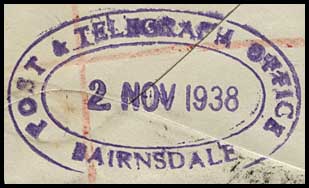 2 November 1938. |
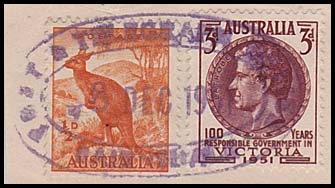 8 December 1951. Image courtesy of Brian Sampson. |
|
|
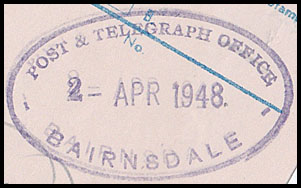 2 April 1948. |
| The usual postal date stamp was also used on telegrams. | 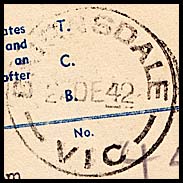 27 December 1942. Used on AW-DO-9A (41). |
|
Briagolong is about 20 miles north of Maffra. A Post Office was opened there on 1 May 1871 and a railway Branch was opened from Maffra in 1879. The Maffra Spectator of 3 June 1890 reported that "The Postmaster-General has given his consent for a Post and Telegraph office at Briagolong in one building in place of existing arrangements". The Report for 1890 confirmed the outcome. |
| Bruthen. East Gippsland. |
|
|
|
The descriptive and insightful comment provided on page 72 is reproduced: "The romantically-situated township of Bruthen stands on a lofty eminence overlooking the River Tambo, some 14 miles from the Gipps Land Lakes. The district around is devoted to pasture and agriculture and most of it is very mountainous and heavily timbered. Access to Bruthen is by horseback from Bairnsdale and the distance to Melbourne by road, steamer and railway is 246 miles. The population of the isolated little town numbers about 300 persons". |
|
The Telegraph Office was opened on 29 May 1880 - perhaps two years after the engraving included above. The Bendigo Advertiser contained the following:"The opening of the office bring us within the pale of civilization. Three mails a week saved us from becoming heathens, but to be in a minute correspondence with the world makes a man feel happy and careless of city gaiety. We sent the deputy-postmaster a congratulatory message. In reply he thanked us, and hoped Bruthen would be benefited in every way. The receipts for the first day amounted to a goodly sum and, if the inaugural takings be an index for the future, the new office will pay". |
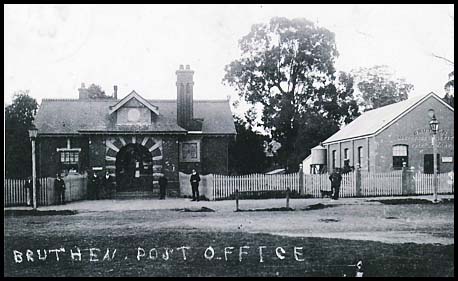 Early image of Bruthen Post Office - even perhaps before the Telegraph Office had been opened. Early image of Bruthen Post Office - even perhaps before the Telegraph Office had been opened.There is no telegraph pole at the right side. The front door is in the middle of the building. Image and details by courtesy of Brian Sampson of Bairnsdale. |
|
|
|
|
By 1886, the first postmaster of the Bruthen P&T office had been replaced. On 16 October 1886, the Bairnsdale Advertiser included the following article from its "own correspondent":
|
|
The Office at Bruthen was issued with a 1 hole Belt & Buckle date stamp.
|
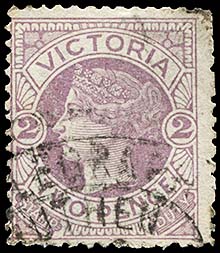 No date. |
| Buchan. East Gippsland. A Telegraph Office was opened in May 1885. |
| Cann River. East Gippsland. The Morgan family established a homestead near the Cann River in about 1879 after cutting their own 96 km track from Marlo to that locality. A Post Office was established at the Morgan homestead on 1 July 1890 as a number of settlers moved in the area. The Telegraph Office at Cann River was the second most easterly office behind Mallacoota East. It was established Around 1900, a number of settlers began to establish themselves at a place about 9 km to the north and opened a store, a church and a school there. A Receiving Office was opened at the Cann River Settlement about 1902 and that service was upgraded to a Post Office on 1 July 1912 - soon after tenders were called in the Gazette of 4 May 1912 for the erection of a telephone line between Orbost and Cann River Settlement. The Office was renamed Noorinbee Post Office on 1 September 1913. It changed status to a Telegraph/Telephone Office on 19 February 1964 but closed on 22 December 1964. The Rutherglen Sun of 4 May 1918 contained an article with observations from a traveller who had spent time in and around "Cann River - 120 miles from Bairnsdale, the land of maize, pigs and pumpkins ...The journey (to Bairnsdale) would take about two weeks until recently and now the railway extension to Orbost reduces the journey by 55 miles ... The speaker also spoke of the social conditions of the people living 120 miles from the nearest railway. 60 miles from the nearest telegraph and 60 miles from the nearest doctor who absolutely refused to go to the people and patients had to be brought in - sometimes with dire results. Yet the people were happy. Seldom seeing a stranger, the children were so shy that they would scatter like rabbits at the approach of any person not known to them. The people were loyal to the church. On account of the mud in winter, it was impossible to walk many yards and the women would come to church on horseback carrying their babies on the front of the saddle. At one place he visited they had only had a minister three times in 100 years. At another place, when holding a service there, he was told on no account to take up a collection as there would be a free will offering; that was 80 miles from his home - 160 miles to hold the service; the free-will offering was 1s 6d. At that place there were old men who had never seen a city, never seen a train and, although the sea was only 60 miles away, had never seen it. The manner of living was bad in the extreme". The Cann River Office was issued with a T. O. date stamp. As changes were made to the date stamp, five formats were created. |
||
|
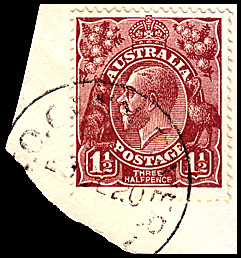 23(?) December 1920. |
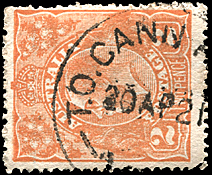 20 April 1921. |
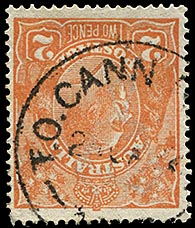 2? January 1922. |
||
|
||
|
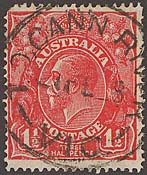 21 February 1928. Prestige Philately March 2006 Lot 831. |
|
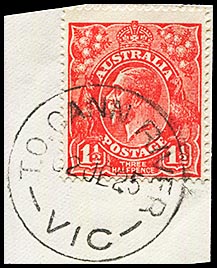 |
||
|
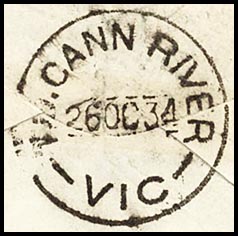 6 October 1934. On reverse of the cover below. |
||
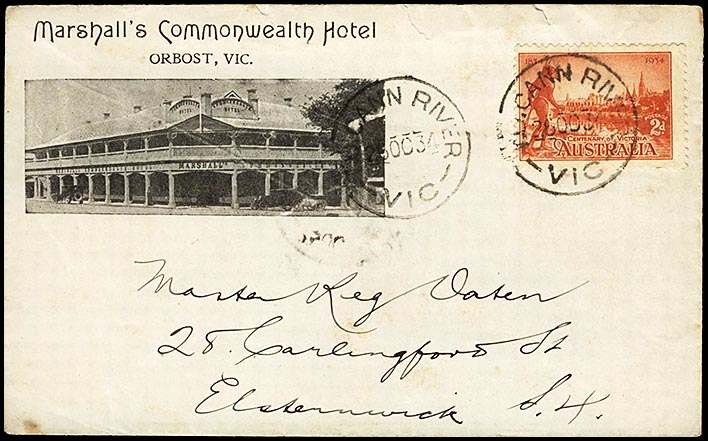 26 October 1934. Phoenix Auction April 2023, Lot 2288. |
|||
|
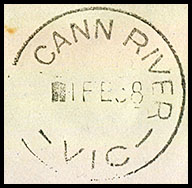 1 February 1938. |
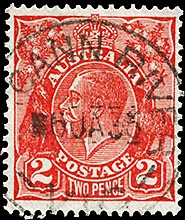 6 January 1936 |
|
||
| Lake Tyers. East Gippsland. Lake Tyers opened as a Receiving Office in 1902 and was reclassified to a Post Office on 1 July 1927. It closed on 26 February 1971. Lake Tyers is along the coast and north east of Lakes Entrance.
|
||
The Receiving Office was issued with a TELEGRAPH OFFICE date stamp.
|
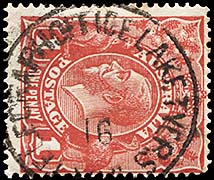 1916 - no day or month. Prestige July 2009 Lot 488. |
|
|
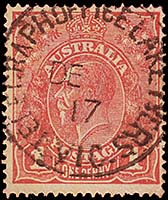 December 1917. |
|
|
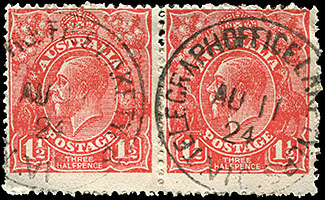 11 August 1924. |
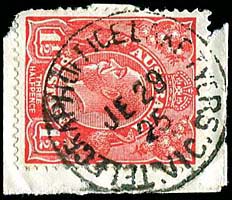 29 June 1925. |
| Lakes Entrance (Cunninghame). East Gippsland. The Telegraph Office was opened as Cunninghame in October 1879. The Post Office had opened in February 1870. On 17 July 1884, the Bairnsdale Advertiser displayed its disappointment at one staff member: "If the telegraph station at the Lakes' Entrance is to be of any practical benefit and service to the shipping and commercial community, the speediest and most reliable news should be obtained from it. That the operator stationed there has been very neglectful respecting the manner in which he has discharged his duties has been apparent for a very long time, as complaints regarding his lapses have been made to us so frequently as to be perfectly nauseous. So proverbial have been his delinquencies of late that we have seldom taken the trouble to inspect the blackboard at the post-office for shipping information, but have in place thereof interviewed the captains of the steamers arriving froth the Entrance, from whom we have gathered later and more reliable intelligence than that transmitted by the operator. It is always a delicate matter to adversely criticise the conduct of a Government official, but when these serious complaints are so frequent, and no attempt is made by the officer to amend his ways, it becomes imperatively necessary that steps should be taken to bring the matter directly under the notice of the authorities, in order that that they will take the requisite course to have the existing unsatisfactory state of affairs rectified. That the operator may be disinclined to remain at such a secluded station as the one at the Entrance, may possibly be one explanation for his remissness, but are business people to be inconvenienced because the official is apathetic, or becomes negligent in order to court removal? We are certainly inclined to give a positive and emphatic negative to such an interrogation, holding an opinion that if an officer will not faithfully discharge his duties in one position he will be equally remiss if removed to another. At any rate the operator's sins of omission have become so unbearably frequent, that we feel it necessary to call upon the authorities to either compel him to be more attentive in the future, or else to replace him by an officer who will so discharge his duties as will enable trading circles to reap the advantages of telegraph communication with the Lakes' Entrance". The region is now called Lakes Entrance after a name change in January 1915.
|
||
An oval rubber date stamp (RO2 - TS) was issued to Lakes Entrance for use with Telegrams. Unusually, it had no date line.
|
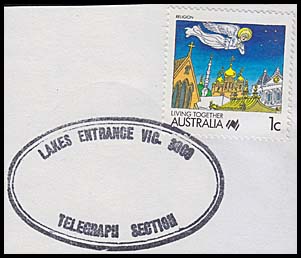 Lakes Entrance Telegraph Section. No date line.
|
|
| Need a CUNNINGHAME | ||
Lakes Entrance postal date stamp.
|
On 9d Kangaroo on Map on telegram piece. |
|
Lakes Entrance:
|
|
|
| Maffra. East Gippsland. The Telegraph Office was opened on 26 July 1875. It was under the charge of Mrs. Macarthur.
|
| Marlo. East Gippsland. Marlo is SE of Orbost. It is the place where the Snowy River flows into Bass Strait - having flowed past Orbost. It was founded by James Stirling in 1875. A place of interesting development. The Bairnsdale Advertiser of 28 June 1888 reported that "the Post and Telegraph department agreed that a telegraph office will be opened at Marlo provided a resident will provide an office and take charge, and a guarantee of £75 per annum be given by 3 or 5 persons". The same paper noted on 25 October 1888 that, at a meeting of the Tambo Shire Council on the 10th of that month "that guarantors in respect of the Marlo telegraph could not be obtained for so large an amount as £875. Cr Besley moved, Cr Cameron seconded, that consideration be postponed for one month". Significant change to the agreement amount. The telephone line reached Marlo in 1923 and the first connection was in James Stirling's Marlo Hotel. The post office opened as a Receiving Office in 1902 and was upgraded to a Post Office on 1 July 1927. |
||
A TEL. OFFICE date stamp was used at Marlo.
|
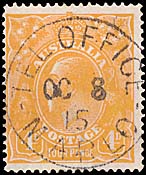 8 October 1915. |
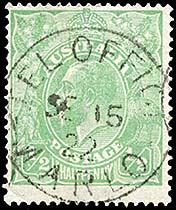 22 September 1922. Latest recorded date. |
| Omeo. East Gippsland. Gold was discovered at Omeo in 1854. The Telegraph Office in Omeo opened in November 1879. The magnificent DELAYED handstamp used at Omeo for a number of years is shown elsewhere. |
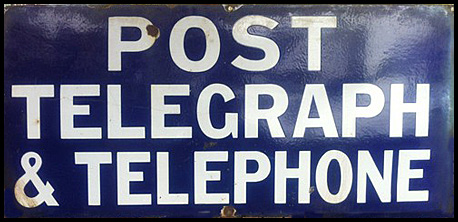 Sign allegedly from the Omeo P&T Office. Source: Ebay, July 2013. |
|
|
||
|
||
A 1 hole Belt & Buckle date stamp was used at Omeo:
|
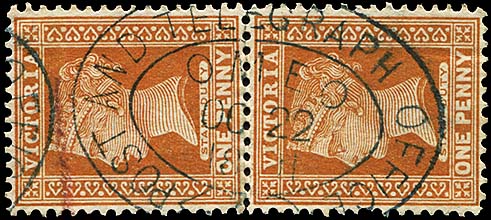 22 October 1891. |
|
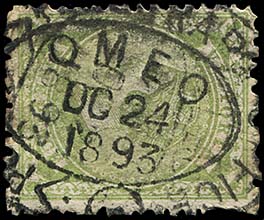 24 October 1893. On 9d apple green (1892 (printing). |
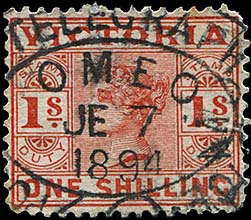 7 June 1894. |
|
|
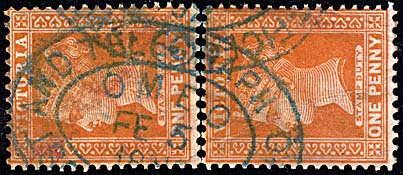 5 February 1889?. |
|
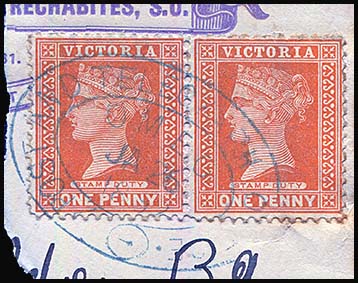 26 January, 1892. |
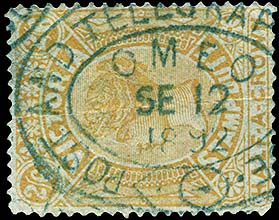 12 September 1892. On 2/6 Stamp Duty. |
|
The following story was reported in the Ovens and Murray Advertiser of 1 January 1884 (p. 2):
|
||
|
Toonalook, an aboriginal name for place of many fish was the original name of Paynesville. Toonalook was renamed Paynesville in 1886. The Telegraph Office opened on 1 May 1885 as Toonalook and, along with the Post Office, changed name to Paynesville in 1886. The Post Office had opened on 8 November 1879. EXTENSION OF THE TELEGRAPH TO PAYNESVILLE. A little over a week ago a public meeting was held at Paynesville to consider the advisability of taking steps to secure an extension of the telegraph line to the "fishing village." It was then decided that a deputation should visit Melbourne to wait upon the Postmaster-General. Accordingly, on last Thursday, a deputation of the fishermen of Paynesville and the fish salesmen of Melbourne, introduced by Mr. A. Harris, M.L.A., waited on the Acting Deputy Postmaster-General, in the absence of Mr. Berry, to ask that telegraphic communication be established between Paynesville and Bairnsdale, a distance of about 8 miles. It was pointed out by Mr. Harris that the want of telegraphic communication at Paynesville had seriously injured the interests of the fishermen there as also other residents of that place. It was impossible now to regulate the supplies of fish to the Melbourne markets - the result being that shipments sent there were frequently a total loss which was preventable if the department provided the accommodation asked for. To the fish-dealers in the city, the numerous visitors to Paynesville and to business people there and elsewhere, the want of telegraphic communication had been seriously felt. The construction of the line named would cost very little, while the office could be conducted at a small cost to the department. Mr. McGowan said he was very favorably impressed with the representations made to him. He would lay the petition presented and the views expressed before the Hon. the Postmaster General and inform Mr. Harris early". At a community meeting on 12 September 1884, four citizens guaranteed a bond of £100 for five years. Also agreed was that "the site of both the Post and Telegraph Offices should be at the pier, that being the most suitable position for both. At the pier the general public and travellers would be equally well served and, in fact, the revenue from telegraph communication would mainly depend upon that site being selected, inasmuch as it would offer the greatest facilities for the receipt and despatch of messages". On 21 March 1885, the Bairnsdale Advertiser reported "The residents of Paynesville and the travelling public are reasonably anxious to know when the telegraph wire between Bairnsdale and Paynesville will be utlised. It has been reported that an attempt has been made to shift the site of the Post and Telegraph office from the wharf to an allotment some distance away but a large petition against such alteration has been sent in. There can be no doubt that the wharf is the place for the office as it will best suit public convenience and that site will be most advantageous to the department from a point of revenue". On 16 April 1885, the Bairnsdale Advertiser: "The following advertisement, which appears in the Melbourne papers, speaks for itself: " Wanted, about 1st May, a female telegraph operator for the department at Paynesville; one who can produce testimonials as to skill in telegraphy; reside and board on the premises. Apply by letter, stating terms, etc., to Mrs. M. E. W. Prosser, postmistress, Paynesville, Gippsland". |
|
A Post Office was opened at Stratford on 1 May 1858. In 1871-72, the community argued for a Telegraph Office - on the one hand with the Postmaster-General and on the other between two town factions especially over where the office should be located. A critical issue was that most thought it inappropriate for the Telegraph Office to be conducted by a private business person. On 7 November 1872, the Gippsland Times reported on yet another well-attended community meeting but one that was critical in resolving various issues. After long conversations:
On 13 February 1873, the Gippsland Times reported that "The building for the Post and Telegraph Offices in course of erection at Stratford is now nearly completed and adds an improved appearance to the part of the town in which it is situated. It is expected that the offices will be fit for use in about six weeks time. When in full working order, the telegraph will prove a great boon to the residents of Stratford and its neighbourhood". The Telegraph Office was opened on 26 May 1873 under the charge of Mrs. Hodgson. By November 1880, new deputations were asking the Minister for the erection of a (new) Post and Telegraph Office at Stratford, the present building being unfit for the requirements of the district". A Telegraph Office at the Railway Station operated between about 1910 to about 1916. |
| Tonghi Creek. East Gippsland. The Post Office opened on 1 July 1927 and was reclassified to a Telegraph Office on 8 July 1945. It is just to the west of Cann River and east of Club Terrace. The Office was issued with a T.O. date stamp: |
||
|
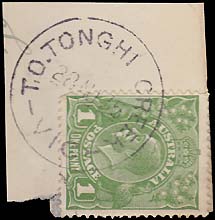 28 August 1935. 28 August 1935. |
|
|
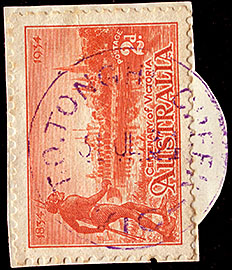 31 July 1934. |
|
|
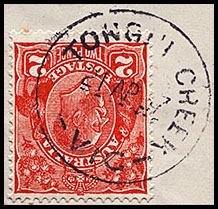 21 April 1937. |
|
|
||
| Tongio. East Gippsland. South-east of Omeo. |
|
|
|
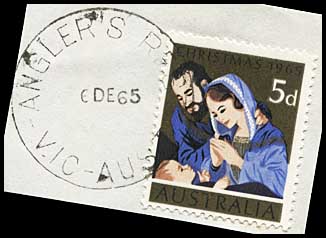
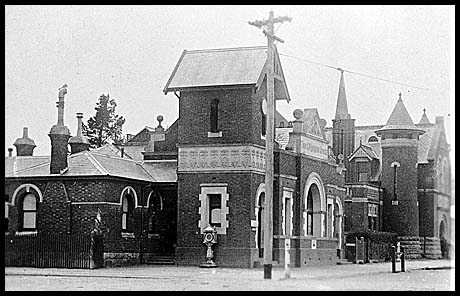
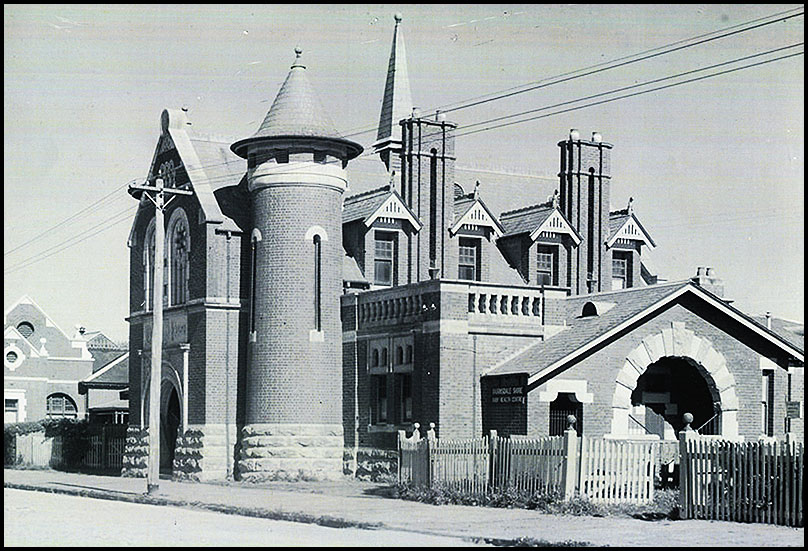
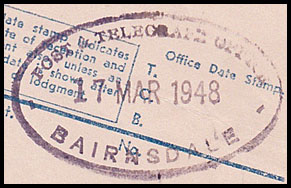
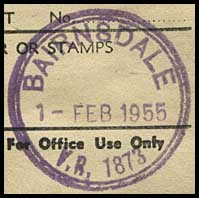
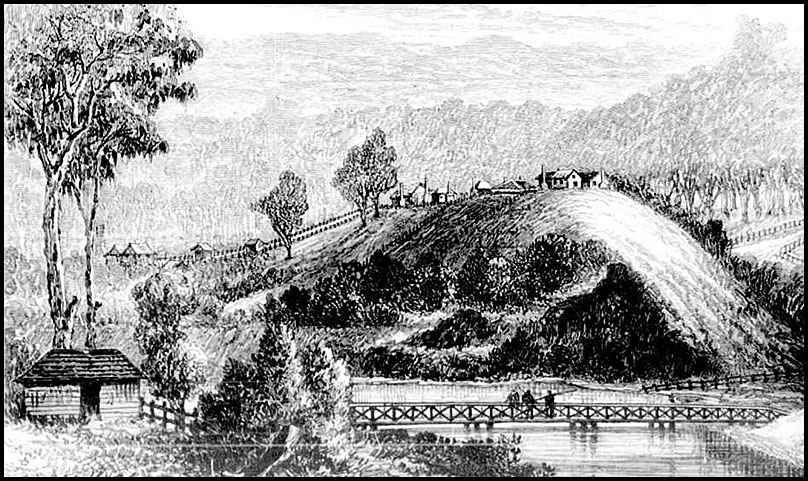
 P&T 1920.jpg)
